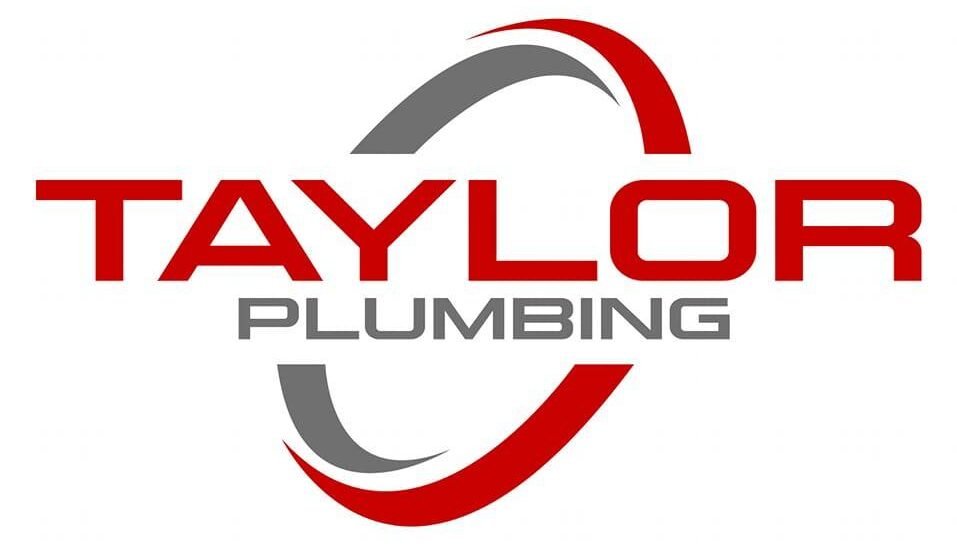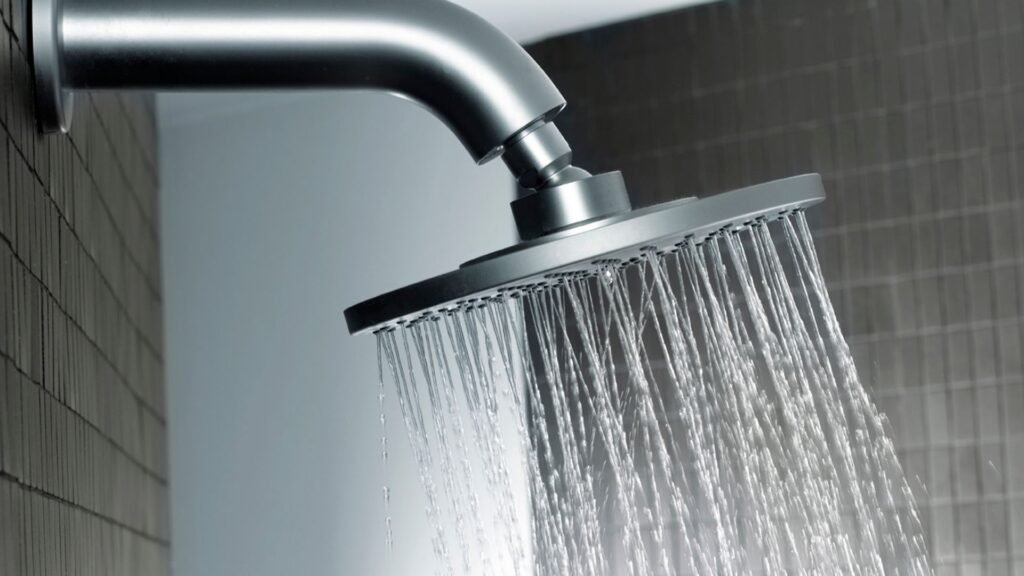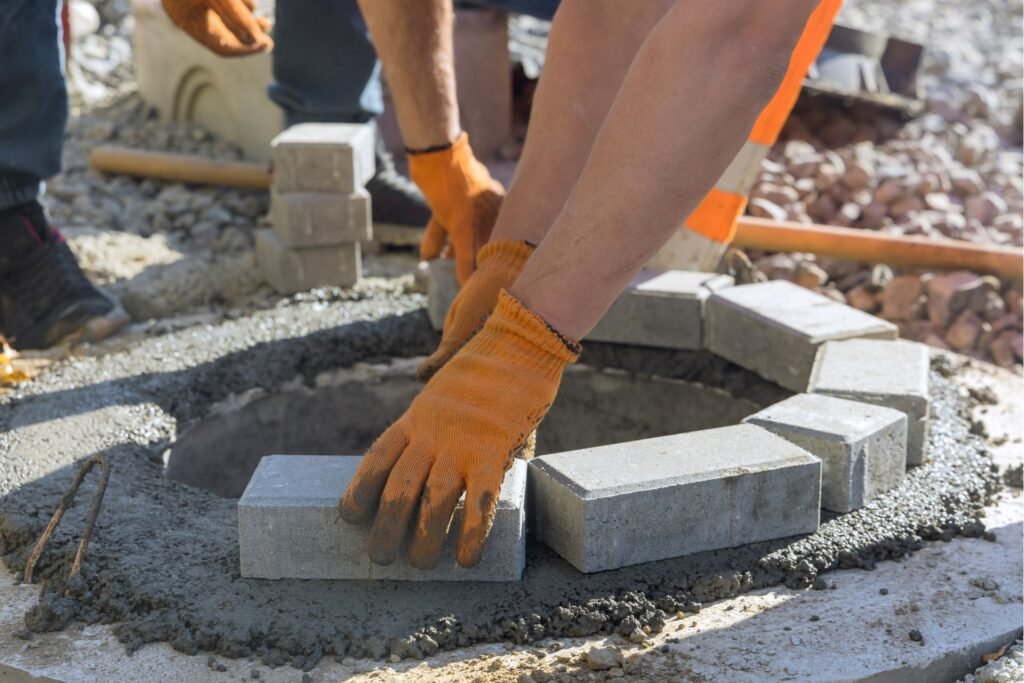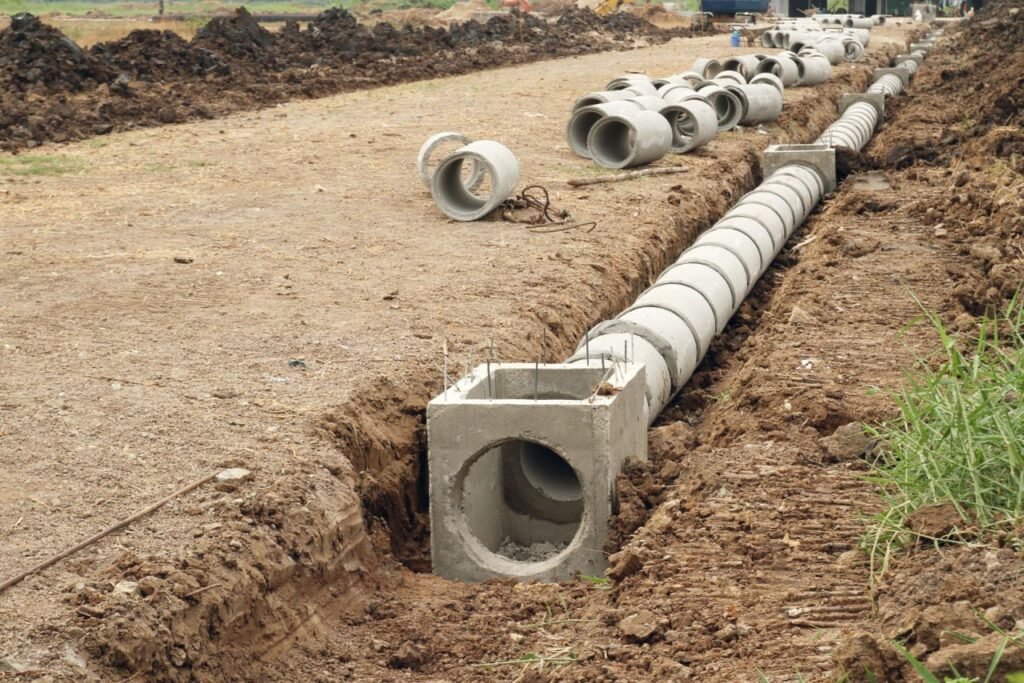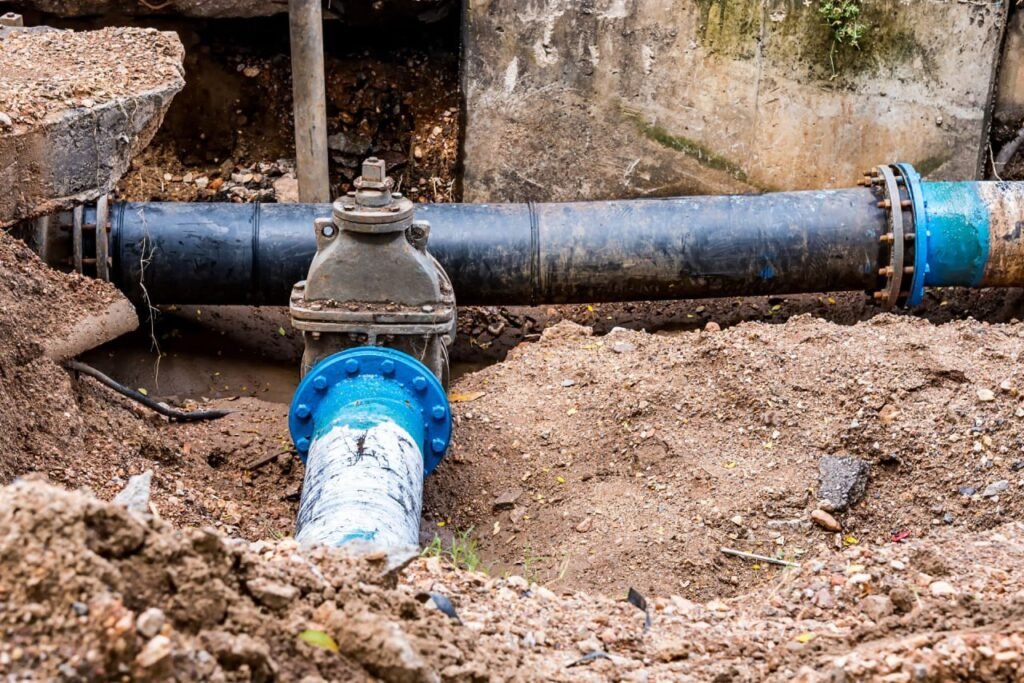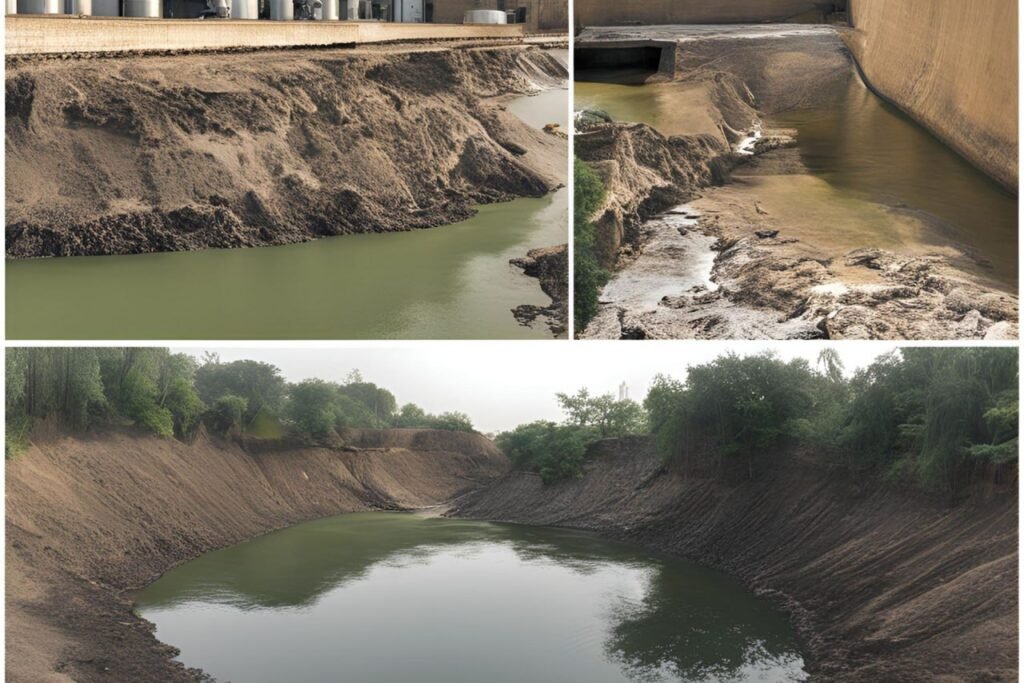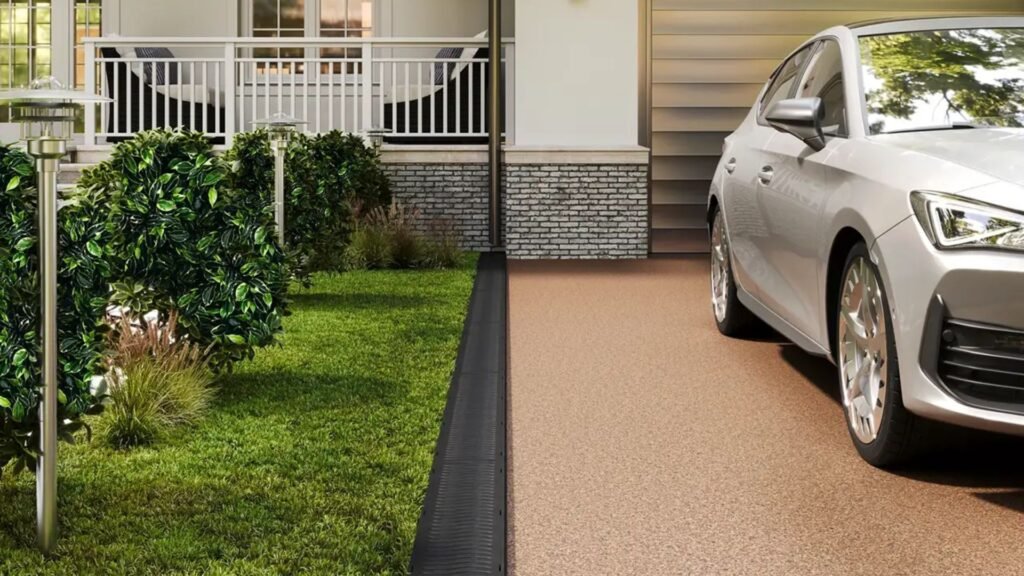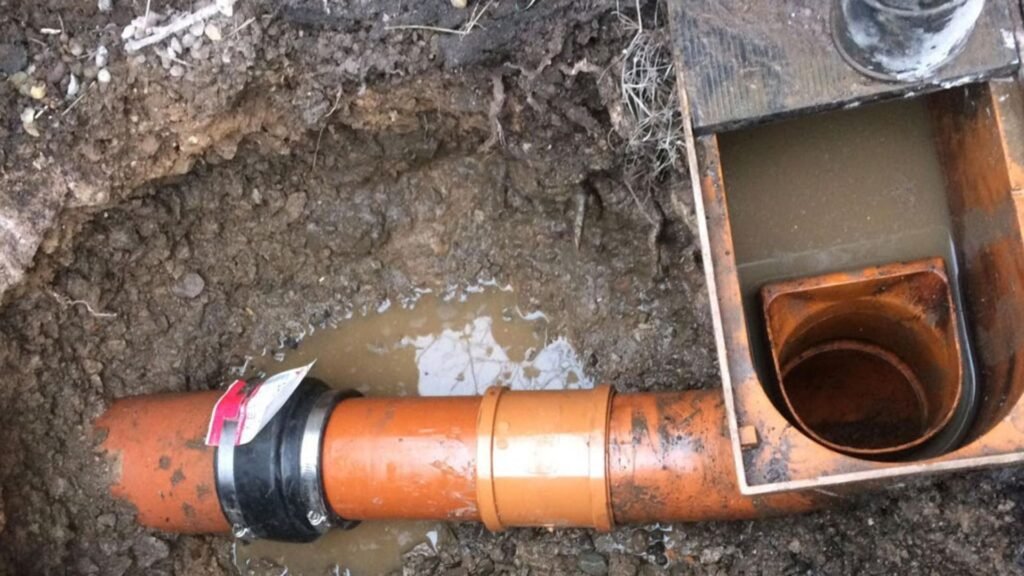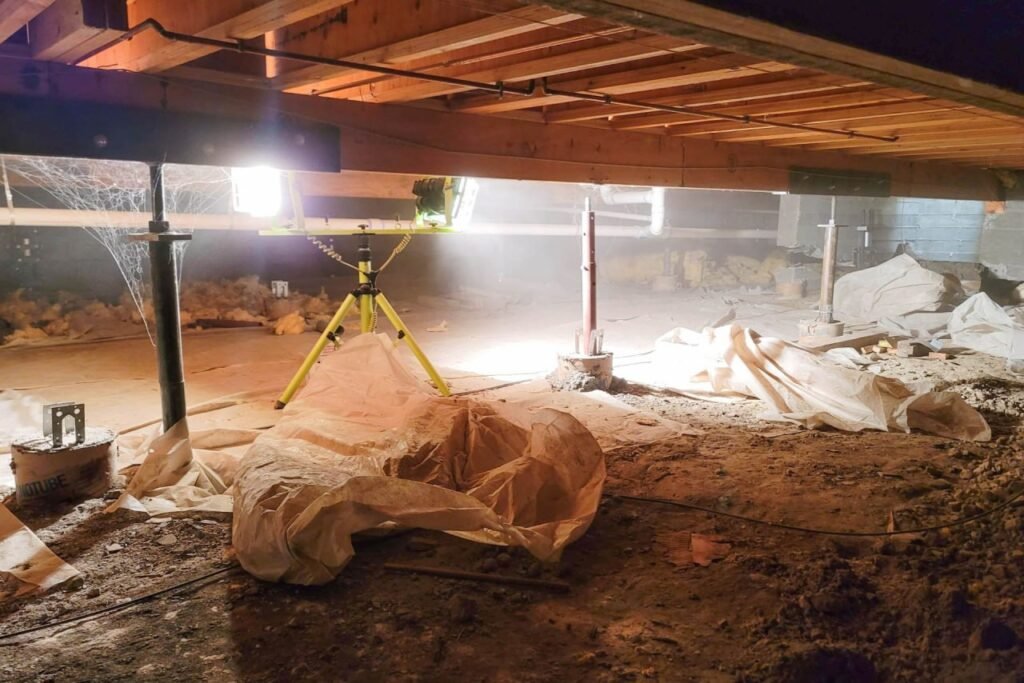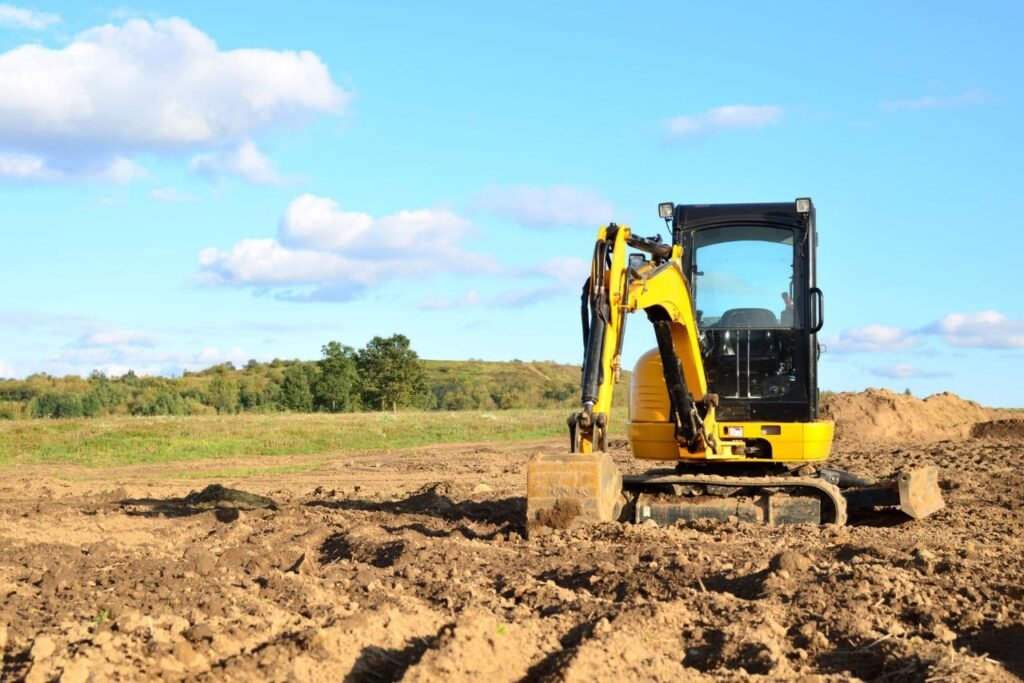Welcome to the ultimate guide on how to increase water pressure in your shower, where we’ll explore practical tips and solutions to transform your shower experience. Low water pressure is a common issue that can turn an otherwise refreshing shower into a frustrating daily ordeal. Whether you’re dealing with a weak spray that barely rinses or are simply curious about boosting your water flow, you’ve come to the right place. In this post, we’ll walk you through quick fixes, more advanced solutions, and even some preventative tips, so you can enjoy a revitalizing, high-pressure shower every day.
To increase water pressure in your shower, start by cleaning the showerhead to remove mineral buildup, check for kinks in the hose, and remove any flow restrictors. For more advanced solutions, consider installing a high-pressure showerhead or a shower pump. If the issue persists, you may need to adjust the pressure-reducing valve or consult a professional plumber to inspect your home’s plumbing system.
- Common Causes Of Low Water Pressure
- Quick Fixes To Improve Shower Water Pressure
- Advanced Fixes For Persistent Low Water Pressure
- Understanding Water Pressure Regulations
- How To Maintain Optimal Water Pressure
- Benefits Of A High-Pressure Shower
- FAQs: About How To Increase Water Pressure In Shower
- What causes low water pressure in my shower?
- How can I increase water pressure in my shower quickly?
- How do I clean my showerhead to improve water pressure?
- Can low water pressure be caused by my home’s plumbing system?
- What is a flow restrictor, and should I remove it?
- What is a shower pump, and how does it help with water pressure?
- Should I call a plumber if I can't fix my low water pressure problem?
- Can installing a new showerhead increase water pressure?
- How do I check if my home’s water pressure is too low?
- Are there any regulations limiting water pressure in showers?
- Conclusion
Common Causes Of Low Water Pressure
Why Is My Shower Pressure So Low?
Low water pressure can turn your daily shower into a frustrating experience. If you’re finding that your once-invigorating shower now feels more like a trickle, it’s essential to understand what might be causing the issue. Below are some common reasons why your shower water pressure might be lower than you’d like, and what you can do to fix it.
Faulty or Clogged Showerhead
One of the most frequent causes of low water pressure is a problem with the showerhead itself. Over time, showerheads can become clogged with dirt, debris, or mineral deposits, especially in areas with hard water. A clogged showerhead restricts the flow of water, resulting in weaker pressure. Additionally, if the showerhead is old or damaged, it may not distribute water efficiently. Fortunately, this is usually an easy fix: cleaning or replacing the showerhead can restore your water flow to its former glory.
Build-Up of Mineral Deposits
If you live in a region with hard water, mineral deposits such as calcium and lime can build up in your plumbing and showerhead over time. Hard water is notorious for causing blockages that can significantly reduce the water flow, leading to low pressure in the shower. The best way to tackle this issue is to regularly clean your showerhead and plumbing fixtures using a descaling solution or vinegar, which helps dissolve mineral deposits. This is a common problem, especially in homes that don’t have water softeners installed. Regular maintenance can prevent the build-up from becoming a more significant issue.
Problems with the Plumbing System
Sometimes the issue goes beyond the showerhead, and low pressure may be caused by problems within your home’s plumbing system. For example, pipes that are too small or corroded can limit water flow, making it difficult for water to reach your shower at an adequate pressure. Leaks in the pipes can also contribute to reduced pressure, as water is lost before it reaches the shower. If your home has older plumbing, this might be something to look into. In such cases, consulting a professional plumber to assess and repair your plumbing system may be necessary.
Low Municipal Water Pressure
Another possible cause of low water pressure in your shower is the overall water pressure supplied by your local municipality. In some areas, particularly those with outdated infrastructure or in times of drought, municipal water pressure may be lower than usual. If the issue isn’t isolated to your home and affects your neighbors as well, it’s possible that the water supply to your area is insufficient. While this is outside your control, you can discuss the issue with your water supplier or install a water pressure booster pump to mitigate the effects of low municipal pressure.
Water Restrictions or Shared Water Sources
In some homes or apartment complexes, water restrictions or the sharing of water sources between multiple units can lead to a reduction in water pressure. For example, if several people in the building are using water at the same time, you may notice a dip in shower pressure. Additionally, water-saving devices such as flow restrictors (often required by law in water-conservation regions) may also reduce your water pressure. Although these devices are beneficial for the environment, they can sometimes make your shower less satisfying. If you’re in an area with water restrictions, consider upgrading to a high-pressure showerhead that is designed to comply with regulations while still providing a strong flow.
Understanding the common causes of low water pressure is the first step toward finding a solution. Whether it’s a simple clogged showerhead or a more complex plumbing issue, identifying the root cause will help you restore your shower to its optimal performance. Regular maintenance, such as cleaning showerheads and checking for leaks, can prevent low water pressure from becoming a recurring problem, while more advanced solutions like booster pumps can provide a permanent fix for homes with consistently low pressure.

Quick Fixes To Improve Shower Water Pressure
If you’re frustrated with weak water pressure in your shower, don’t worry—there are several quick and cost-effective fixes you can try before diving into more complex solutions. In this section, we’ll cover practical steps you can take to boost your water flow and enhance your shower experience, without needing extensive plumbing knowledge or expensive tools.
Clean the Showerhead
Over time, mineral deposits, particularly in areas with hard water, can clog the tiny holes in your showerhead, reducing water flow. Cleaning the showerhead is a simple and highly effective way to increase water pressure. Here’s how you can do it:
1. Detach the Showerhead: If possible, remove the showerhead by unscrewing it from the pipe. If it’s fixed, don’t worry—you can still clean it while it’s in place.
2. Soak in Vinegar: Prepare a solution of equal parts white vinegar and water. Submerge the showerhead in the solution for a few hours (or overnight if it’s particularly clogged). If your showerhead is fixed, you can fill a plastic bag with the solution and secure it around the showerhead with a rubber band.
3. Scrub Residue: After soaking, use an old toothbrush or a soft brush to scrub away any remaining debris.
4. Rinse and Reattach: Once cleaned, rinse the showerhead thoroughly with water and reattach it. You should notice an improvement in water flow immediately.
This quick fix can make a big difference, especially if you live in an area with hard water, which often leads to mineral build-up in plumbing fixtures.
Check for Kinks in the Hose
If you use a flexible showerhead with a hose, one of the most common causes of low water pressure is a kink or twist in the hose. A small twist in the hose can significantly reduce water flow, leading to poor pressure at the showerhead. Here’s what to do:
1. Examine the Hose: Look for any obvious kinks or bends in the hose. Even a slight twist can restrict water flow.
2. Straighten the Hose: Simply straighten out the hose and ensure it hangs freely. If the hose is old or damaged, consider replacing it with a new one, as wear and tear can cause permanent kinks.
This is a quick and easy fix that costs nothing but can immediately improve water flow.
Remove the Flow Restrictor
Many modern showerheads are equipped with flow restrictors, which are designed to limit water flow in compliance with water-saving regulations. While these are great for conserving water, they can reduce the pressure to a level that’s less than ideal for a good shower. Here’s how you can remove the flow restrictor:
1. Locate the Restrictor: The flow restrictor is usually a small plastic disc located inside the showerhead or the connection where the showerhead attaches to the pipe.
2. Disassemble the Showerhead: Unscrew the showerhead from the pipe and look for the restrictor. It’s typically colored to stand out (often green, blue, or orange) and can be removed with a pair of tweezers or a small tool.
3. Remove with Care: Gently remove the restrictor, but be cautious about local water-saving regulations. Some regions mandate flow restrictors to help conserve water, and removing them could potentially violate these rules.
4. Reassemble: After removing the restrictor, reassemble the showerhead and test the water pressure.
While this is a straightforward fix, it’s important to balance the desire for higher pressure with the need for responsible water use, especially in areas where water conservation is critical.
Replace the Showerhead
Sometimes, the best way to increase water pressure is to upgrade your showerhead. Standard showerheads might not be designed to optimize water flow, especially if they’re older models. Here’s how to go about replacing it:
1. Choose a High-Pressure Showerhead: High-pressure showerheads are specifically designed to boost water flow by minimizing obstructions and maximizing water force.
2. Installation: Replacing a showerhead is a simple DIY task. Unscrew the old one, apply plumber’s tape to the threads of the pipe for a tight seal, and screw the new showerhead in place.
3. Test the Pressure: After installation, turn on the shower to see the difference. Many modern high-pressure showerheads use innovative technology to optimize water flow while still conserving water.
This fix is affordable and can provide a more permanent solution to your water pressure woes, especially if cleaning or removing the flow restrictor doesn’t do the trick.
Check for Leaks
Even a small leak in your plumbing system can drastically reduce water pressure. Leaks in the showerhead, hose, or pipe connections can divert water away from the showerhead, reducing the pressure you experience. Here’s how to check for leaks:
1. Inspect the Showerhead and Hose: Look for visible water drips or moisture at the joints and connections. A leak can reduce pressure at the showerhead.
2. Check Pipe Connections: Turn off the water and inspect the pipe connections leading to the showerhead. Tighten any loose fittings with a wrench and apply plumber’s tape where necessary to ensure a watertight seal.
3. Call a Professional: If you suspect a more serious leak in the plumbing behind the walls, it’s best to call a plumber. Fixing hidden leaks requires more advanced tools and expertise.
Fixing leaks not only improves water pressure but also helps prevent potential water damage to your home.
By following these simple, step-by-step fixes, you can easily boost your shower’s water pressure without breaking the bank. Whether it’s cleaning a clogged showerhead, removing a flow restrictor, or upgrading to a high-pressure model, these quick solutions can make a significant difference in your shower experience. And remember, if the issue persists despite these efforts, it might be time to consider more advanced fixes or consult a professional plumber.

Advanced Fixes For Persistent Low Water Pressure
When the quick and easy fixes don’t solve the problem, it’s time to consider more advanced solutions. These options require a bit more effort and expertise but can make a world of difference in your shower’s water pressure. Let’s dive into these solutions in more detail.
Installing a Shower Pump
If you’re struggling with consistently low water pressure and have already tried simpler fixes like cleaning the showerhead or removing the flow restrictor, installing a shower pump could be the answer. A shower pump is a device designed to boost water pressure, particularly in homes with gravity-fed systems or in areas where the water supply pressure is low.
Here’s how it works: A shower pump draws water from your plumbing system and forces it through to your shower at a higher pressure. It can dramatically improve your shower experience, turning a weak drizzle into a powerful stream. Shower pumps come in different types, with some designed for single showers and others able to boost the water pressure throughout your home.
However, before installing a shower pump, it’s important to check your home’s plumbing setup. Pumps work best with certain water systems, so you may need to consult with a professional plumber to ensure it’s compatible. If you’re unsure, it’s worth getting advice on the best type of pump for your needs and whether your plumbing can handle the extra pressure.
Adjusting the Pressure-Reducing Valve (PRV)
In some homes, water pressure is intentionally reduced to prevent damage to the plumbing system. This is done using a pressure-reducing valve (PRV), which regulates the flow of water entering your home from the municipal supply. While this is great for protecting your pipes, it can lead to lower water pressure than you’d like in your shower.
The good news is that a PRV can often be adjusted to allow for more water flow. If you know where the PRV is located (usually near the main water line), you can adjust it yourself with a wrench. Simply turn the adjustment screw clockwise to increase the pressure. Be cautious not to overdo it, as excessively high pressure can cause leaks or damage your pipes. Aim for a balanced setting that boosts your shower pressure without risking your home’s plumbing.
If you’re uncomfortable making this adjustment on your own, it’s best to call a professional. A plumber can adjust the valve safely and ensure your home’s water pressure is within safe and optimal limits.
Replacing Old Pipes
In older homes, low water pressure can often be traced back to outdated plumbing. Older systems may have narrow or corroded pipes that restrict water flow, leading to a noticeable drop in pressure at the shower. Over time, these pipes can become clogged with rust, mineral deposits, or debris, making it harder for water to pass through.
If your home’s plumbing system hasn’t been updated in decades, it might be time to consider replacing the old pipes. Modern plumbing systems use wider pipes, often made from materials like PVC or copper, which allow for better water flow and pressure. While this is a more significant investment, it can greatly improve your water pressure not just in the shower, but throughout your home.
Before jumping into a full plumbing overhaul, it’s wise to have a professional inspect your system. A plumber can assess the condition of your pipes and recommend whether replacements are necessary or if there are other, less invasive options to improve your water pressure.
When to Call a Professional Plumber
Sometimes, the best solution to persistent low water pressure is to call in an expert. While many homeowners can handle basic fixes, advanced plumbing problems often require a professional touch. If you’ve tried cleaning the showerhead, adjusting the PRV, or even installing a new shower pump but still aren’t seeing results, a plumber can help.
Plumbers have the expertise to diagnose complex issues, such as hidden leaks, pipe corrosion, or problems with your home’s main water supply. They can also ensure that any adjustments you make, like increasing water pressure, won’t negatively impact your home’s plumbing system or lead to future problems.
In short, if you’re unsure about making significant changes to your plumbing, or if you’ve exhausted all other options, it’s time to call a plumber. Investing in professional help can save you time, money, and the headache of trying to troubleshoot more serious water pressure problems on your own.
These advanced fixes may require more effort than cleaning a showerhead or swapping out a fixture, but they can make a big difference in solving persistent water pressure issues. Whether you’re installing a shower pump, adjusting the pressure-reducing valve, replacing old pipes, or bringing in a professional, you’ll be on your way to enjoying a stronger, more satisfying shower experience.

Understanding Water Pressure Regulations
Can I Increase My Water Pressure Legally?
When thinking about improving water pressure in your shower, it’s important to first understand the legal side of things. Many countries and regions, including New Zealand and Australia, have strict water conservation laws to help manage the precious resource of fresh water. These regulations can affect how much water your shower uses and, by extension, how much pressure you’re able to get from your showerhead. So, before making any changes to your plumbing or shower setup, it’s crucial to check what’s allowed in your area to avoid any unwanted legal issues.
In places like New Zealand and Australia, where water conservation is a high priority due to droughts and environmental concerns, there are regulations in place that limit the maximum flow rate of water through showerheads. In New Zealand, for example, water-efficient showerheads are designed to use no more than 9 liters of water per minute. In Australia, the Water Efficiency Labelling and Standards (WELS) scheme helps consumers identify products, like showerheads, that meet certain water-saving criteria. These standards aim to reduce overall water consumption, which is great for the environment but can also mean lower water pressure for your shower.
So, what can you do if you’re frustrated by low water pressure but want to stay compliant with local laws? The good news is that there are eco-friendly solutions that can boost your shower experience without breaking the rules. One option is to invest in water-saving showerheads specifically designed to maintain high pressure while using less water. These eco-friendly showerheads use air-infusion technology to amplify the flow of water, giving you a powerful shower without wasting excess water. You can enjoy better water pressure without exceeding the legal flow rates, helping you stay both comfortable and environmentally responsible.
It’s also worth noting that some older homes might have outdated plumbing systems that don’t comply with modern water efficiency standards. If you’re living in an older home, upgrading to newer fixtures or pipes may help you optimize water pressure within the legal limits. Additionally, you could consider having a professional plumber assess your home’s plumbing system to ensure everything is up to code and running efficiently.
Remember, the goal isn’t just about boosting water pressure—it’s about finding a balance between comfort and compliance. By using water-efficient products and staying aware of local regulations, you can improve your shower experience while doing your part to conserve water. So, before making any major changes, be sure to check in with your local water authority or a licensed plumber to ensure that your efforts to increase water pressure are both legal and sustainable.
While water pressure regulations may limit the maximum flow rate in certain areas, there are still plenty of ways to improve your shower experience without breaking the law. Eco-friendly showerheads, regular maintenance, and mindful upgrades to your home’s plumbing system can help you achieve a satisfying, high-pressure shower while staying compliant with water conservation laws.

How To Maintain Optimal Water Pressure
Once you’ve increased your shower’s water pressure, the next step is making sure it stays that way. While a powerful, refreshing shower can be a game-changer in your daily routine, maintaining that optimal water pressure requires a bit of ongoing care and attention. By implementing a few simple preventative measures, you can ensure that your shower pressure remains strong for the long haul, without running into unexpected dips or the hassle of dealing with weak water flow again.
Regularly Clean and Maintain Your Showerhead
One of the most common causes of low water pressure is a buildup of mineral deposits in your showerhead, especially if you live in an area with hard water. Over time, these deposits can clog the small holes in the showerhead, reducing water flow and making your once-strong shower feel like a trickle. To prevent this, it’s essential to clean your showerhead regularly.
A simple, DIY cleaning solution involves soaking the showerhead in a mixture of vinegar and water. If your showerhead is removable, you can take it off and let it soak in a bowl of vinegar overnight. For fixed showerheads, you can secure a plastic bag filled with vinegar around it, letting it sit for several hours. Afterward, scrub away any lingering debris with an old toothbrush, and rinse thoroughly. This regular maintenance will keep the water flowing freely and prevent any frustrating drops in pressure.
Keep an Eye on Leaks or Changes in Pressure
Small leaks in your plumbing can quietly reduce water pressure over time, so it’s crucial to monitor your system for any signs of leakage. A dripping tap or a small leak in your shower hose may not seem like a big deal at first, but these minor issues can escalate and negatively impact your overall water pressure.
Check your bathroom for any visible leaks, especially around faucets, shower hoses, and pipe connections. Additionally, if you notice a sudden or gradual decrease in your shower’s water pressure, this could be a sign that there’s a hidden leak somewhere in your plumbing. Addressing leaks as soon as they’re detected not only preserves your water pressure but also helps conserve water and reduce your utility bills.
Schedule Annual Plumbing Check-Ups
While regular cleaning and vigilance for leaks can handle many water pressure issues, having your home’s plumbing inspected by a professional annually is a wise move—especially if you live in an older home. Over time, plumbing systems can wear out, and pipes may become clogged or corroded, both of which can restrict water flow.
During a check-up, a plumber can assess the overall health of your plumbing, look for any developing issues, and recommend repairs or upgrades to keep things running smoothly. They can also adjust your pressure-reducing valve, if necessary, to ensure your home’s water pressure is set at an optimal level. By catching potential problems early, you’ll avoid more significant issues down the line and keep your water pressure in top shape.
Be Mindful of Water Usage
While high water pressure can make for a luxurious shower, it’s important to balance that with mindful water usage. Many regions have water conservation regulations, and excessive water consumption can strain both the environment and your wallet. By being conscious of how much water you use, you can enjoy strong water pressure while still staying eco-friendly.
Consider investing in water-saving showerheads that are designed to provide a satisfying, high-pressure shower without using excessive amounts of water. These showerheads use advanced technology to maintain a powerful flow while conserving water, offering the best of both worlds. Additionally, keep an eye on your water consumption habits, like how long you spend in the shower or whether you let the water run unnecessarily. Not only will this help you stay compliant with local water regulations, but it will also lower your water bills and reduce your environmental footprint.
Maintaining optimal water pressure in your shower doesn’t have to be a difficult task. By keeping your showerhead clean, checking for leaks, scheduling regular plumbing check-ups, and being mindful of your water usage, you can enjoy the benefits of a powerful shower day after day. With a little attention and care, you’ll be able to preserve that refreshing, high-pressure shower experience for the long term, without sacrificing efficiency or environmental responsibility.

Benefits Of A High-Pressure Shower
Why Having Good Water Pressure Improves Your Shower Experience
A high-pressure shower doesn’t just make your morning routine more enjoyable; it can genuinely enhance your overall well-being. Let’s dive into why having strong water pressure can make a big difference in your daily life and why it’s worth addressing low-pressure issues in your home.
Better Relaxation and Muscle Tension Relief
There’s nothing quite like stepping into a powerful shower after a long day or a tough workout. The strong stream of water from a high-pressure shower can mimic the soothing effect of a massage. The water jets help to ease muscle tension, loosen stiff joints, and provide much-needed relief after physical activity. This is particularly helpful for people who experience regular aches, pains, or stress-related tension. The sensation of water hitting your body with enough force helps to stimulate circulation, promoting relaxation and encouraging muscle recovery. In a way, a high-pressure shower turns your bathroom into a personal spa.
More Efficient Rinsing (Saving Time in the Shower)
Ever felt like you’re stuck in the shower longer than necessary because the water pressure is too low to properly rinse out shampoo or soap? High water pressure solves this problem by providing a more effective rinse. The stronger flow of water quickly washes away soap, shampoo, and conditioner, meaning less time spent under the spray. Whether you’re in a rush in the morning or simply want to conserve water, better pressure ensures that you can finish your shower faster without sacrificing cleanliness. This is particularly important for people with thick hair or for those using moisturizing body washes that can be harder to rinse off with weak water pressure.
Increased Satisfaction in Daily Routines
Your shower is one of the first experiences of your day, and having strong water pressure can set the tone for how you feel afterward. A good shower is more than just functional – it’s part of a self-care routine that helps you feel refreshed, clean, and ready to face the day. Poor water pressure can leave you feeling less satisfied, while a powerful, invigorating shower can make you feel more energized. Whether it’s a morning boost or a relaxing evening wind-down, a shower with high pressure creates a better overall experience, allowing you to fully enjoy this simple daily routine.
Mental Well-Being: Setting the Tone for the Day
A high-pressure shower can also have a positive effect on your mental well-being. There’s something about standing under a powerful stream of water that has a calming, almost meditative effect. It’s a moment of solitude where you can focus on yourself, clear your mind, and even enjoy a few minutes of mindfulness before the busyness of the day sets in. A great shower can provide a mental reset, giving you a fresh start in the morning or helping you de-stress in the evening. Studies have shown that warm showers with strong water pressure can lower stress levels and improve mood, which is a significant benefit for mental health.
Upgrading your water pressure is about more than just convenience; it’s about improving your quality of life. From physical relaxation to mental rejuvenation, the benefits of a high-pressure shower make it a worthwhile investment for anyone looking to enhance their daily routines. Whether you’re tackling muscle tension, saving time, or simply aiming for a better start to your day, strong water pressure can be the key to transforming your shower experience.

FAQs: About How To Increase Water Pressure In Shower
What causes low water pressure in my shower?
Low water pressure in your shower can be caused by several factors, including a clogged or faulty showerhead, build-up of mineral deposits, leaks in the plumbing system, low municipal water pressure, or the use of flow restrictors to conserve water.
How can I increase water pressure in my shower quickly?
For a quick fix, you can try cleaning the showerhead to remove any debris or mineral build-up. You can also check for kinks in the shower hose or remove the flow restrictor from the showerhead. Replacing the showerhead with a high-pressure model is another easy option.
How do I clean my showerhead to improve water pressure?
To clean your showerhead, soak it in a mixture of vinegar and water for a few hours or overnight to dissolve mineral deposits. If your showerhead is removable, detach it and soak it in a bowl. For fixed showerheads, fill a plastic bag with the vinegar solution and secure it around the showerhead.
Can low water pressure be caused by my home’s plumbing system?
Yes, low water pressure can be caused by your home’s plumbing system, particularly if there are old, corroded pipes, leaks, or a pressure-reducing valve that needs adjustment. In such cases, professional plumbing assistance may be required.
What is a flow restrictor, and should I remove it?
A flow restrictor is a device installed in showerheads to reduce water consumption and meet water-saving regulations. Removing it can improve water pressure, but you should be mindful of local water conservation laws before doing so.
What is a shower pump, and how does it help with water pressure?
A shower pump is a device that boosts water pressure in homes with low water flow. It works by drawing water from the pipes and increasing the pressure before it reaches the showerhead. Installing a shower pump is a more advanced solution but can dramatically improve water pressure.
Should I call a plumber if I can’t fix my low water pressure problem?
Yes, if you’ve tried basic fixes and your water pressure is still low, it may be time to consult a professional plumber. They can inspect your plumbing system for issues such as leaks, old pipes, or improperly set pressure-reducing valves.
Can installing a new showerhead increase water pressure?
Yes, installing a high-pressure showerhead can significantly improve water pressure. These showerheads are designed to optimize water flow and can be a simple and effective solution.
How do I check if my home’s water pressure is too low?
To check your home’s water pressure, you can use a water pressure gauge, which attaches to an outdoor spigot or faucet. Ideally, the pressure should be between 40-60 psi. If it’s lower than that, you may need to adjust your pressure-reducing valve or address other issues.
Are there any regulations limiting water pressure in showers?
In some areas, there are regulations aimed at conserving water, such as restrictions on the maximum flow rate allowed for showerheads. It’s important to check local laws before removing flow restrictors or making changes that could increase water usage.
Conclusion
In conclusion, improving water pressure in your shower doesn’t have to be a complicated or costly process. We’ve covered a range of solutions, from simple fixes like cleaning your showerhead and checking for leaks to more advanced options like installing a shower pump or adjusting the pressure-reducing valve. The key takeaway is to start with the easy methods first and only move on to the more involved fixes if necessary. Whether you’re dealing with a mild drop in pressure or a persistent problem, these steps can help restore that powerful, refreshing shower you’ve been missing. We encourage you to give some of these tips a try and see the difference for yourself. If you’ve had success with any of these methods or have additional questions, feel free to share your experience in the comments section. After all, a good shower is more than just a routine—it’s a moment of relaxation and revitalization that everyone deserves, and making a few improvements can go a long way toward making that experience as enjoyable as possible.
About the Author:
Mike Veail is a recognized digital marketing expert with over 6 years of experience in helping tradespeople and small businesses thrive online. A former quantity surveyor, Mike combines deep industry knowledge with hands-on expertise in SEO and Google Ads. His marketing strategies are tailored to the specific needs of the trades sector, helping businesses increase visibility and generate more leads through proven, ethical methods.
Mike has successfully partnered with numerous companies, establishing a track record of delivering measurable results. His work has been featured across various platforms that showcase his expertise in lead generation and online marketing for the trades sector.
Learn more about Mike's experience and services at https://theleadguy.online or follow him on social media:
